19.11.2008 | 23:48
Balinese kettir eru tryggastir og greindastir allra kattategunda og bestu vinir sem hægt er að hugsa sér
TRADITIONAL BALINESE CAT TEMPERAMENT AND HISTORY
Titó minn, sem er creme point, tilheyrir balinese afbrigði sem kallast javeneese
Litir eins og red tabby, blue tortie, cinnamon, favn, smoke, silver og aðrir litir voru skráðir sem javeneese frá árinu 1961 en seal point, blue point, chocholate point og lilac point eru upprunalegu litirnir á balineese köttunum.
The Traditional Balinese (aka Applehead Balinese) cat combines the unique personality and intelligence, robust body type, pointed coloring, and the minimal shedding of the Traditional Siamese, with a softer voice and a silky coat.
They are extremely intelligent, curious and loving. Their behavior and loyalty often resembles what most people expect of a dog more than a cat, as they follow their owners about, sleeping outside of the door of any room you occupy, that they cannot enter, and amusing themselves with a toy until they can once again be on your lap.
Agile, swift, muscular and extremely intelligent, they love to play fetch or to make up other games. They get along easily with other cats and with dogs and yet are independent enough to adjust to periods of being alone.
While they still 'talk' like their Siamese cousins, their voices are far softer and they speak only when they have something they feel is important to say. As such, they grow up to make delightful 'watch-cats' often alerting their family when strangers approach or when something seems 'wrong'.
They are very alert to their owners and surroundings, but not a hyperactive cat. Rather, they maintain an easy balance of playing and napping depending on the circumstances.
HISTORY OF THE TRADITIONAL BALINESE The early history of the Traditional Balinese is the same as the history of the Traditional Siamese. The Siamese is considered by many to be a 'natural' breed - that is to say, one that developed without the intervention of man.
The first Siamese cats appeared in the West in the mid-to-late 1800s. Photographs from the late 1880s of some of the first cats to be imported from Siam show the thick, round heads and solid, muscular bodies that distinguish the Traditional Siamese from today's modern Siamese that dominate the modern show-ring.
Many say that Balinese kittens have always appeared now and again in purebred Siamese litters. Some attribute a pure Siamese appearing with a longer coat to be a simple mutation and say there are examples of early drawings that depict pointed cats with what seems longer fur. Another opinion is that it was an outgrowth of the domestication of the Palas cat (Felis Manul) who originated in western China and has a very dense coat which comes in a wide variety of colors
. Others say that the longer coat is a result of the early British breeders crossing them with the then popular Angora or Turkish Angora, a cat with a tremendous history as a companion cat. The Turkish Angora was first introduced to Europe in the 14th century when the crusaders brought Turkish Angoras back home in their saddle bags .
The truth may be a bit of both.
The long-haired trait persisted however, and a long-hair Siamese was registered with C.F.F. in 1928. They were not bred in earnest however until 1955 when a woman named Marion Dorsey of California began breeding and showing the longer-haired variety. It turned out the Balinese bred 'true' meaning that when a Balinese was bred to another Balinese the resulting litter were all always Balinese, thus qualifying it to be a 'pure breed'.
At this time they were still referred to as Long-Haired Siamese but soon were christened 'Balinese' not, as many think, because it came from Bali, but because the fanciers of the time thought so graceful and athletic a cat resembled the graceful Balinese dancers. In
1961 the Balinese was recognized and accepted for registration in the same colors as Siamese seal point, chocolate point, blue point and lilac point. Other colors such as red tabby, blue tortie, red cream, cinnamon, fawn, smoke, silver and all others were registered as Javanese, just as other colors of Siamese which emerged due to out-crossing, were registered as Oriental Shorthairs.
In the 1950s virtually all the Siamese and Balinese cats were what we think of today as the Traditional Siamese and Balinese, a heavier boned, rounder headed cat . But just as the ever changing whims of the show ring judges have dictated what body type is fashionable at any given time, the Traditional Balinese, like the Traditional Siamese, fell out of favor in the late fifties and early sixties and were gradually replaced with the modern version of the breed. The modern version is a smaller longer and thinner more angular cat with large ears and, in the case of the Balinese, a short coat on its body with the only long hair occurring on its plumy tail.
This look became popular with the show-oriented Balinese breeders, while other breeders, who preferred the Traditional look, continued to breed the larger, rounder-headed Traditional Balinese. These Traditional breeders found that their cats were no longer competitive in the show ring and stopped showing though they continued breeding with their existing purebred Balinese stock.
Currently, the Traditional Balinese is quite rare, though they are beginning to make a comeback as many pet buyers and breeders alike rediscover the Traditional Balinese many endearing qualities as top-notch companion cats. It should also be pointed out, that Traditional Balinese are purebred cats, descended from the original cats imported from Siam.
A pointed cat that you find in a shelter, though it may look Balinese, is probably not a Traditional Balinese. Enough purebred Siamese, Himalayan or other pointed and long-haired cats have interbred with domestic cats over the years that the gene which creates the pointing pattern and longer hair, is found in a large number of cats. So while some may look Balinese, they may have very little Balinese blood in them.
Meginflokkur: Bloggar | Aukaflokkur: Vinir og fjölskylda | Facebook
Eldri færslur
- Desember 2014
- Apríl 2013
- Janúar 2013
- Nóvember 2012
- Ágúst 2012
- Október 2011
- Júní 2011
- Apríl 2011
- Febrúar 2011
- Janúar 2011
- September 2010
- Júní 2010
- Maí 2010
- Nóvember 2009
- Ágúst 2009
- Júlí 2009
- Júní 2009
- Maí 2009
- Apríl 2009
- Mars 2009
- Febrúar 2009
- Janúar 2009
- Desember 2008
- Nóvember 2008
- Október 2008
- September 2008
- Ágúst 2008
- Júlí 2008
- Júní 2008
- Maí 2008
- Apríl 2008
- Mars 2008
- Febrúar 2008
- Janúar 2008
- Desember 2007
- Nóvember 2007
- Október 2007
- September 2007
- Ágúst 2007
- Júlí 2007
- Júní 2007
- Maí 2007
- Apríl 2007
- Mars 2007
- Febrúar 2007
- Janúar 2007
- Desember 2006
- Nóvember 2006
- Október 2006
- September 2006
- Júlí 2006
- Maí 2006
- Apríl 2006
Tenglar
http:www.showcaseyourmusic.com/KerstGudjonsson
Lög eftir Halldór Guðjónsson, texti eftir Kerst
- http://
- Halldór Guðjónsson lagasmiður og Kerst textahöf. Flott lög eftir Halldór Guðjónsson og textar eftir Kerst
- http://
http://www.showcaseyourmusic.com/KerstGudjonsson
Lög eftir Halldór Guðjónsson og texti eftir Kerst
http://www.diadems.no/
Ragdoll kettir. En ég er búin að ákveða að fá mér svoleiðis kött þegar Tító minn er farinn. Þessi Xantos sem er í x gotinu verður væntanlegur forfaðir nýja kisans mín
- Ragdoll kettir Ég ætla að fá afkomanda Xantosar þegar Tító er farinn frá mér.
Tenglar
- http://
- Halldór Guðjónsson sem gerði lagið við ljóðið mitt ´ Huggun' og fleiri ljóð eftir mig Hann er góður
- Ljóð á Tíu þúsund tregawött Framúrstefnuleg ljóð
- Myndir Katrínar K. vinkonu Flottar ljósmyndir
- Myndir Rebekka Frábær og fræg
- Ljóð.is
- Allra veðra von
Bloggvinir
-
 katrinsnaeholm
katrinsnaeholm
-
 zordis
zordis
-
 katlaa
katlaa
-
 jonaa
jonaa
-
 halkatla
halkatla
-
 ormurormur
ormurormur
-
 martasmarta
martasmarta
-
 steina
steina
-
 gudnyanna
gudnyanna
-
 zoti
zoti
-
 ragjo
ragjo
-
 diesel
diesel
-
 estersv
estersv
-
 alit
alit
-
 toshiki
toshiki
-
 kaffi
kaffi
-
 svartfugl
svartfugl
-
 jenni-1001
jenni-1001
-
 laufabraud
laufabraud
-
 stormsker
stormsker
-
 svanurg
svanurg
-
 guru
guru
-
 ingo
ingo
-
 lindagisla
lindagisla
-
 bjorkv
bjorkv
-
 prakkarinn
prakkarinn
-
 agny
agny
-
 bergruniris
bergruniris
-
 raggibjarna
raggibjarna
-
 maple123
maple123
-
 saethorhelgi
saethorhelgi
-
 vglilja
vglilja
-
 johannbj
johannbj
-
 partners
partners
-
 vitinn
vitinn
-
 zeriaph
zeriaph
-
 gudrunmagnea
gudrunmagnea
-
 birtabeib
birtabeib
-
 iador
iador
-
 gudrunfanney1
gudrunfanney1
-
 ibb
ibb
-
 kolgrimur
kolgrimur
-
 skjolid
skjolid
-
 bene
bene
-
 coke
coke
-
 hux
hux
-
 nonniblogg
nonniblogg
-
 heringi
heringi
-
 hjolaferd
hjolaferd
-
 amason
amason
-
 joiragnars
joiragnars
-
 steinibriem
steinibriem
-
 rafdrottinn
rafdrottinn
-
 siggith
siggith
-
 vefritid
vefritid
-
 ljosmyndarinn
ljosmyndarinn
-
 poppoli
poppoli
-
 perlaoghvolparnir
perlaoghvolparnir
-
 vitale
vitale
-
 skordalsbrynja
skordalsbrynja
-
 lindalea
lindalea
-
 bidda
bidda
-
 manisvans
manisvans
-
 scorpio
scorpio
-
 haddih
haddih
-
 gattin
gattin
-
 korntop
korntop
-
 brahim
brahim
-
 klarak
klarak
-
 laugatun
laugatun
-
 konur
konur
-
 panama
panama
-
 sigurfang
sigurfang
-
 joklamus
joklamus
-
 valdimarjohannesson
valdimarjohannesson
Heimsóknir
Flettingar
- Í dag (17.9.): 0
- Sl. sólarhring:
- Sl. viku: 3
- Frá upphafi: 0
Annað
- Innlit í dag: 0
- Innlit sl. viku: 3
- Gestir í dag: 0
- IP-tölur í dag: 0
Uppfært á 3 mín. fresti.
Skýringar

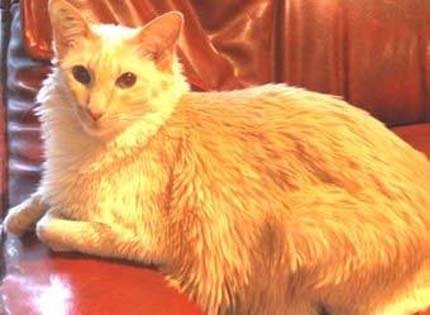

 Myndlistarmaður. Smellið á myndina til að sjá verð á skopmyndum sem og eftirprentunum úr galleryi.
Myndlistarmaður. Smellið á myndina til að sjá verð á skopmyndum sem og eftirprentunum úr galleryi.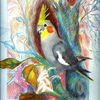
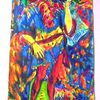

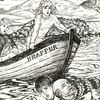
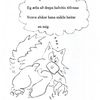


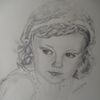
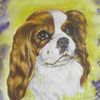
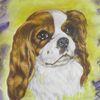
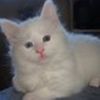
Athugasemdir
Áhugaverð lesning. Er unnt að fá svona ketti hér á landi?
Góðar kveðjur til þín, nafna mín.
Guðný Anna Arnþórsdóttir, 23.11.2008 kl. 22:59
Nei, því miður nafna mín fást þeir ekki lengur á Íslandi. Það var líka svo mikil innræktun í gangi í þessum stofni hér á landi eins og kannski fleiri tegundum. Einn samviskusamur ræktandi sagði við mig að sumir þeir sem rækta ketti hugsuðu meira um 'aurana' sem þeir fá í vasann þegar þeir selja ketti heldur en heilbrigði dýranna. Þeir tíma ekki að flytja inn nýtt blóð með nýjum köttum erlendis frá, heldur skyldleikarækta þeir dýrin. því koma fram alls kyns gallar og sjúkdómar hjá köttunum.
Tító minn er t.d. haldinn meðfæddum nýrna galla vegna innræktunnar. Hann er búinna að líða mikið fyrir það. Áður en þetta uppgötvaðist var búið að draga úr honum fimm jaxla. Tennurnar skemmast vegna nýrnagallans. Í síðasta skiptið sem hann var svæfður til þess að draga úr honum tönn hætti hann að anda. Eitt sinn fékk hann vatn í lungum og hann var sífellt með ógleði af því það var þvag og eiturefni í blóðinu hans.
Margar nætur lá ég með hann í fanginu fárveikan og bað fyrir honum. En eftir að hann var settur á sérfæði (rándýrt), fyrir nýrnaveika ketti hefur honum liðið mikið betur. En ég er reið út í fólk sem gerir svona hluti að rækta saman skyld dýr, en þó hefði ég ekki viljað missa af því að eignast hann Tító, né heldur sé ég eftir peningunum sem ég hef eytt í læknishjálp fyrir hann. Það voru ekki komnar til sjúkratryggingar fyrir ketti þegar ég eignaðist hann Tító minn fyrir tíu árum, enda veit ég ekki hvort tryggingar myndu ná yfir meðfædda galla.
Ég hef átt marga ketti en Tító er einstakur. Það er allt satt sem sagt er um þessa tegund í greininni hér að ofan, enda elska ég Tító út af lífinu.
Svava frá Strandbergi , 23.11.2008 kl. 23:39
Bæta við athugasemd [Innskráning]
Ekki er lengur hægt að skrifa athugasemdir við færsluna, þar sem tímamörk á athugasemdir eru liðin.